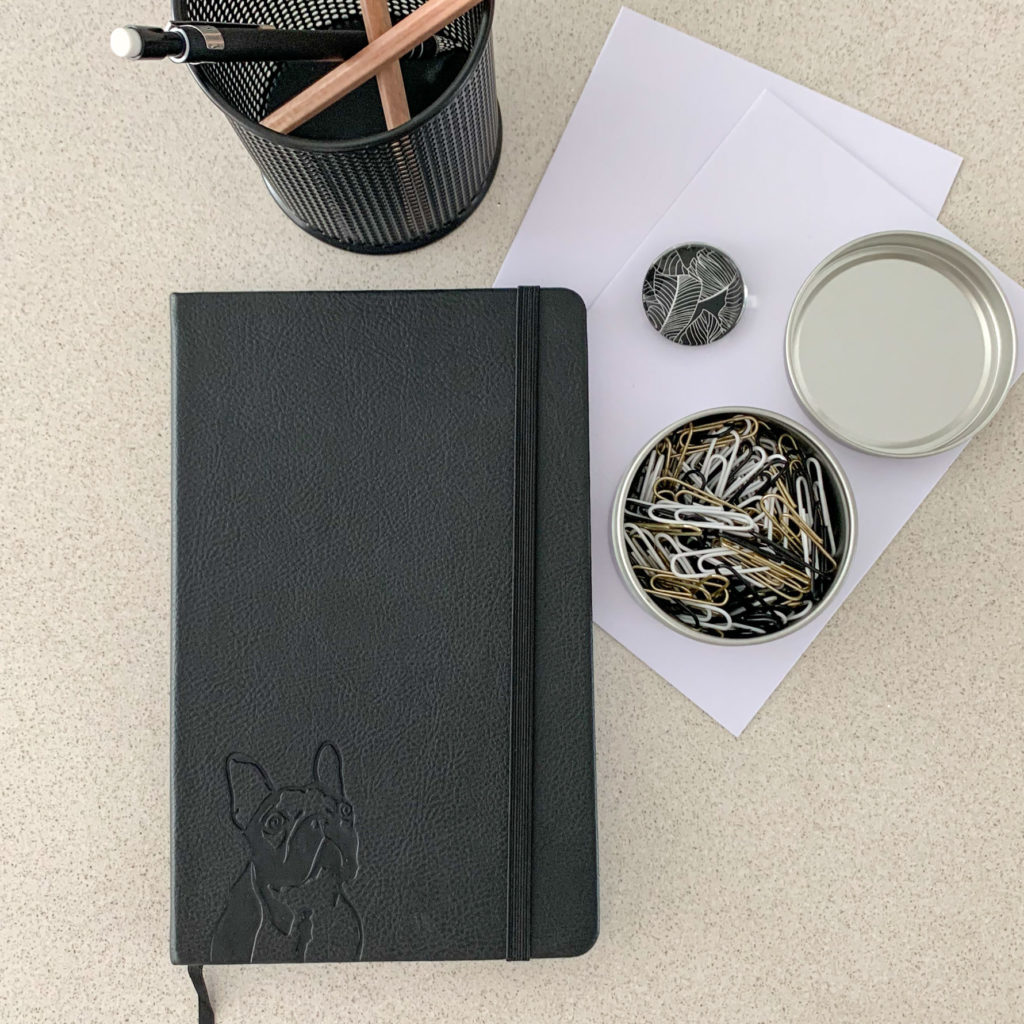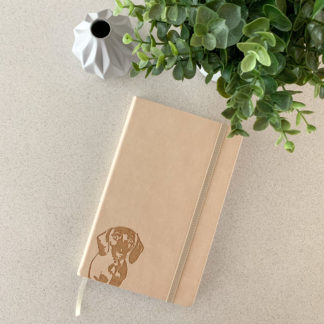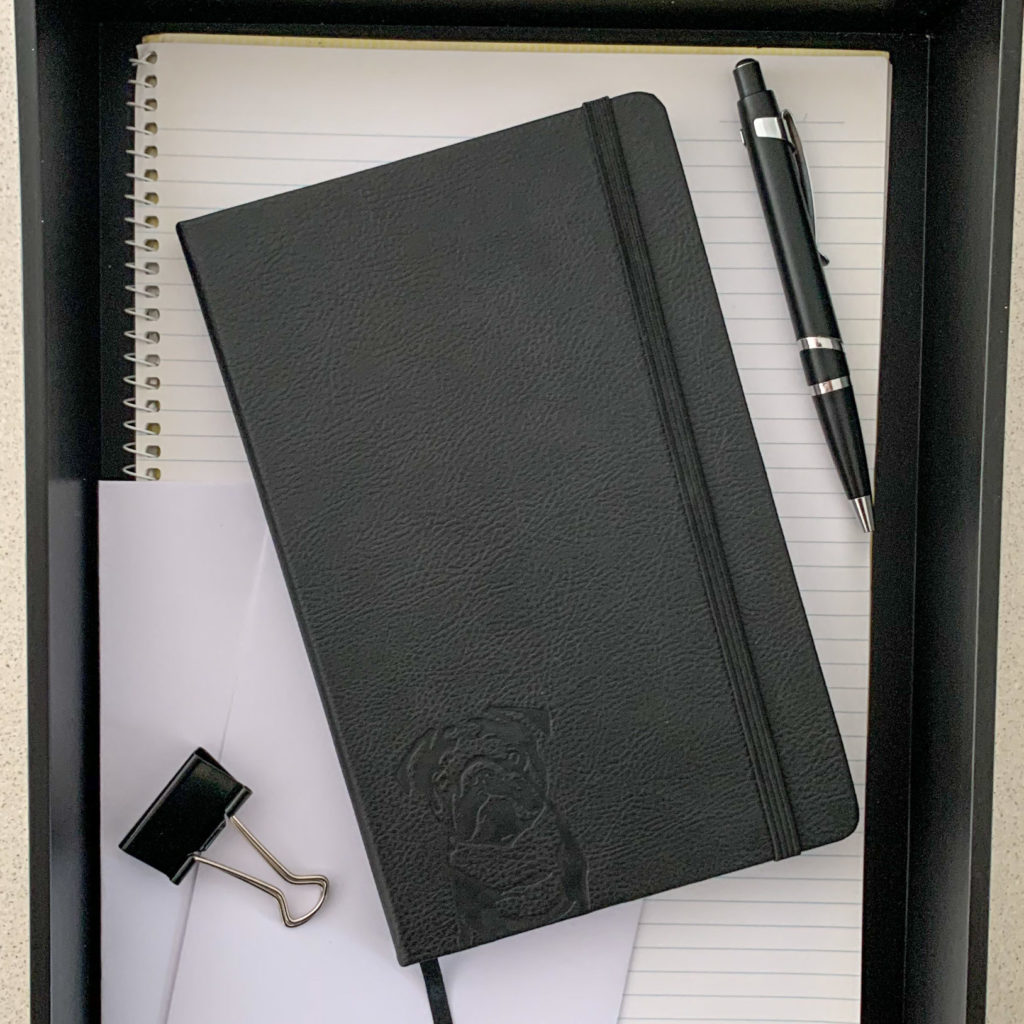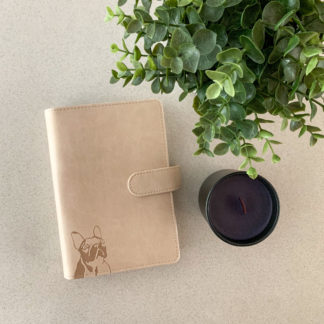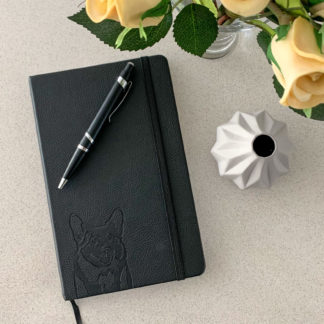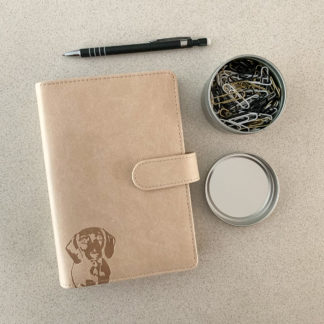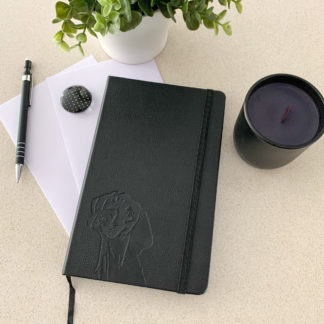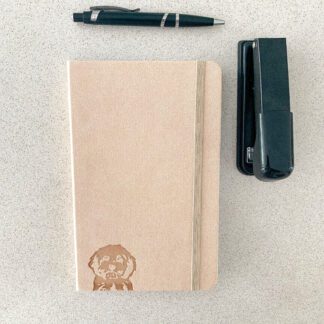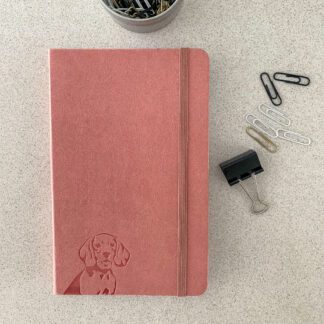Do you use a dog tracker to monitor your dog’s health and activity?
It’s not for everyone, but there are numerous benefits to activity tracking for dogs. The team at Whistle (owned by Mars Petcare) has created a product line that is designed to monitor a dog’s day-to-day movements and help you optimize their health.
This episode of The Dog Show features two team members from the new digital health division at Mars Petcare, called Kinship.
Betty Stearns is the Senior Product Manager of Health & Fitness at Whistle, the ultimate health and location tracker for pets, and Scott Lyle is Head of the Pet Insight Project – a team of data scientists, technologists, and vets that have partnered with Whistle and Banfield Pet Hospitals to conduct the largest population health study in pet care.
In the interview, we discuss the health benefits of tracking your dog’s activity and how the Whistle products and app can unlock these benefits.
Listen
Watch
Read
Will: This episode of “The Dog Show” features two team members from the new digital health division at Mars Petcare called Kinship.
Betty is the senior product manager of health and fitness at Whistle, the ultimate health and location tracker for pets and Scott is the head of the Pet Insight Project, a team of data scientists and technologists as well as vets that have partnered with Whistle and the Banfield Pet Hospitals to conduct the largest population health study in pet care. In the interview, we discuss the health benefits of tracking your dog’s activity and how the Whistle products and app can unlock these benefits. Betty and Scott, welcome to “The Dog Show” today. Thanks for coming on.
Betty: Thanks, thank you so much. Yeah, thanks for having us.
Will: Yeah, really, I’m excited to talk about dog activity and everything we’re gonna be talking about today on the show, you’ve both got a lot of expertise in the space, so it should be some great information for the listeners. But I just wanted to start with something a bit more lighthearted. I understand you’ve both got dogs of your own. So, Betty, let’s start with you, do you want to share a bit of information about your dog? What breed it is and how you ended up with that dog?
Betty: Yeah, absolutely, I have…she’s actually, like, knocked out on the couch right next to me. Her name is Mavis. I would love for you to tell me what breed she is. She’s a total mutt, we rescued her about three years ago and she’s just such an awesome dog. I actually really just love, like, fully breed dogs, I love, like, English Staffordshire Terrier, that was like my favorite. We actually don’t really have them in the U.S. at all, so I saw her…and she was kind of like Staffy-ish looking, so I was like, “Okay, I want her.” So, I have her now and she’s the best dog ever, I love her so much. I love dogs so much, so it’s great.
Will: That’s nice. Like, what type of temperament would you say she has?
Betty: Yeah, she’s a total couch potato. She, like, just needs about like an hour of exercise a day and then besides that, she’s just like knocked down on the couch, sunbathing, just living her life. She was like on the street, totally like homeless little dog, and now she does not act like she ever had a bad life at all, she was just expects only the best and she’s so spoiled. So, she’s great, definitely love rescuing and my whole life, I have, you know, been really a huge advocate of rescuing, so she’s just a great, like, kind of just example of how awesome I think rescuing could be.
Will: That’s nice. So, how old was she when you first got her or…?
Betty: We don’t really know, we think like a year or a year and a half. So, it was kind of funny, we got her and she was so mellow and I think it was a lot more just like shelter decompression and everything. And so, we took her to the vet and we’re like, “Are you sure she’s just one because she, like, has no energy, like, at all?” Because our dog, growing up, we took her to the vet at like 10:00 and they’re like, “Is she gonna calm down, like, ever?” So, it was just so interesting to see such a calm and, like, mellow dog that I’ve never had before and it’s awesome because I’m a pretty lazy person as well, so she fits our house very well.
Will: Yeah, because our dog is four years old now and I’m wondering when she’s gonna get out of that puppy stage.
Betty: Yeah, yeah. I mean, the dog I had growing up, it wasn’t until she was like, 10, so get ready.
Will: Yeah. Oh, I guess it’s nice, especially during these times to have a dog which is happy just to land around the house sometimes.
Betty: Oh, yeah, absolutely. I have no idea how people go through COVID and shelter in place without a dog, it’s just been incredible.
Will: Yeah. So, Scott, how about you? You’ve got a dog as well?
Scott: I do, I just gonna make a comment about Betty’s dog, Mavis. Before COVID, we would have dogs in the office with us, everyone would bring their dogs to the office. And so, I know Mavis really well and I miss Mavis because…and I think she’s super calm, she just walks up and kind of gives you that look like, “Hey, we’re cool.”
Betty: She’ll just sit and stare at you until you pet her.
Scott: Basically. So, I have a Goldendoodle now, he spent a number of years in Europe and eventually when we hit Ireland for the benefit of my son, really, we picked up Clover. So, Clover is almost four years old and to me, she’s like a living teddy bear, she’s the happiest dog and she doesn’t have a mean bone in her body. And the really cool thing about her is that you almost feel like you can read her expressions like she’s a person, and there’s a zipper in the back and if you unzipped it, a person would pop out and say hi, so she’s terrific. And I grew up with an Old English Sheepdog, so, yeah, the dog has been in my life.
Will: Yeah, so you like those biggest size dogs by the sounds of it?
Scott: I do, I like to romp around with them and, you know, it’s just fun play.
Will: The Goldendoodles, are they hypoallergenic dogs?
Scott: In theory and it’s been good. You know, having had an Old English Sheepdog, it would shed and it was like tumbleweed that would roll down the hallway and Clover really doesn’t do any of that.
Will: Okay, that’s helpful because that can cause a lot of cleaning issues.
Scott: Exactly.
Will: Actually, I love the whole, you know, dogs in the office thing. I know that these days everyone’s working from home but it’s interesting, some of the people I’ve interviewed on the show, obviously, they’re dog-related businesses so they’re more attuned to doing that kind of thing but I think there’s a huge benefit of having that in a lot of different industries as well.
Betty: Yeah, I totally agree. I miss it so much. I think now, like, just working from home…like, before meetings, you’d stop by people’s desks who have dogs and just give them a pet or like while you’re waiting for a meeting room to open and it’s just like I miss everyone at the office’s dogs. Like, we’ve talked about, like, rotating dogs for a day to see because we just miss them so much. It’s just like it’s so sad. You know, we’re grateful that we have some dog parents down the hall from us that we can still keep neighbors socialized with but I just also, like, worried they’re not seeing their friends all day and they don’t know why.
Will: Yeah, I guess it’s challenging, some people aren’t dog people, right? Like, obviously, I don’t understand why but some people probably might not be comfortable with that in the office environment but, I mean, anyone that’s working for Whistle is probably okay with that, I imagine?
Betty: Yeah, I think it’s a requirement. We had one guy that was like allergic to dogs at one point and I was like, “Why did you apply to work here?”
Will: Yeah, that’s strange. So, I just want to hear a bit, like, how you got into, you know, this industry in the first place. Scott, do you want to start off with letting us know kind of your background and how you ended up working in Whistle, you know, working on the dog activity and health aspects of it?
Scott: Yeah, you know, a lot of it was luck, in that I was in Silicon Valley for a number of years, variety of different roles, from product to biz dev, you know, your typical thing. And I would always network into some folks in Pfizer Animal Health. And they would fly into San Francisco and we’d have chats about a number of different things and at some point, they said, “Listen, we would really be interested in having digital as a part of healthcare. How do we do something like that?” So Pfizer Animal Health became Zoetis and then eventually after a number of years living in Europe, Paris, London, and Ireland last, we decided to move home and now I had the Pet Insight Project with Kinship.
Will: Yeah. Oh, actually, probably do you want to talk briefly about the Pet Insight Project now and what’s the kind of concept behind that?
Scott: Sure. So, the pet insight as a concept…well, the project itself was started about two years ago in 2018 and it was a partnership between Mars Petcare, Banfield Pet Hospital, and Whistle, Whistle labs. And the idea was to conduct the largest pet care or pet health study of its kind, like, using accelerometer data. And so, what we’ve been doing over the last couple of years is we’ve created a community of citizen scientists and we’ve distributed about almost 100,000 devices out to pet owners and we’ve been tracking their dog’s health. And so, now we’re getting a very good perspective on what healthy looks like and what sick looks like and so that’s how, really, this comes together with Whistle and Betty and myself as partners and how do we take this data science and the AI that we’re using to discern signals and behaviors and actually put them and make them useful for pet owners.
Will: Yeah, interesting. Because one thing, I was reading into the brief of the Pet Insight Project and one thing that I found interesting was, you know, we don’t really understand what dogs are thinking when they’re feeling unwell or kind of what’s leading to that. So, if there’s any insights that pet owners can get, which hopefully all this data will bring those insights, it’d be hugely valuable to pet owners, I imagine?
Scott: Well, it is, because, you know, there’s a lot of…frankly, there’s an underlying principle of what we’re doing and that is that there are subtle changes in behavior that actually link to subclinical changes in health and a lot of this can’t be seen by the eye. So, we’re taking a lot of really high-resolution accelerometer data from Whistle and starting to be able to discern those subtle changes and create alerts so that we can create this transparency, this 24/7 view of what’s really going on with your pack. And so, all of a sudden, you have the chance for earlier intervention and better prevention and all kinds of benefits that come from that really enabling the pet owner.
Will: Interesting. Like, what are some of those signs that you’re saying or is that kind of still forming at the moment?
Scott: Well, we, of course, have some of the more traditional set of activities and postures and those things but most recently at the end of last year, we released our derm designs…and I’ll let Betty to talk a bit more about this in a second, but along derm, seeing if there’s Derm conditions, so scratching and licking.
Will: So, your sign is scratching and licking and in some cases, it might lead to other, like, I guess, more embedded problematic issues.
Scott: That’s right. So, really, we’ve been looking at medical records and we can actually see, through this accelerometer data, subtle changes in the patterns and we can actually start predicting that there is some sort of health challenge that’s coming. So, if you can imagine something that looks like just a lot of scratching initially, it could ultimately becomes some sort of a pyoderma, right? Where the dogs really, really done some damage to itself and that difference in the quality of life with earlier intervention is really what we’re aiming for.
Will: Okay, I guess I don’t want all of the dog owners out there that have dog scratching themselves to panic, they’re all right.
Scott: Right, right, right.
Will: Because, obviously, it may be a leading indicator but there’s also other things that could cause scratching and itching, right?
Betty: Yeah.
Will: I’m asking, in case you didn’t hear.
Betty: No, not at all. And yeah, that’s something kind of the hand-off between Scott and his team and I on the Whistle side is, you know, they create all these incredible algorithms, they’re able to say, “Hey, your dog is scratching 12 seconds a day,” and then on our end, we’re able to tell you and with their algorithms as well, “That’s normal, you know, that’s totally fine. Don’t worry, you know, your dog is green, all good.” And so, it’s an interesting user experience stuff to develop because one, you’re telling them something they’ve never learned before or they never been able to quantify before. So, it’s like, “Oh, your dog’s scratching, you know, 62 seconds a day,” and they’re like, “Okay, Is that a lot? Is that a little?” And so, now we’re able to tell them that.
I think when we talk to a lot of our customers, they’re like, “Oh, my God, this is so cool.” You know, like, “Hey, this alerted me earlier of a condition and it saved me, honestly, like a ton of money at the vet, which is awesome.” Or it’s like, “Oh, I thought my dog was a scratchy dog and I guess they’re not, this gives me a ton of peace of mind.” And so, it’s really on all ends of the spectrum, because I think even though I grew up with dogs, like, Mavis is my first time as like a real…she’s mine as a pet owner and I, like, question all my choices, I have no idea what…I feel like I never have any idea of what I’m doing. And I think with these features, you know, we just want to empower the pet parent to know, you know, how much scratching is normal, how much licking is normal, how much eating, drinking, whatever is normal, or is recommended to keep that healthiest for your pet.
Will: Okay. While you’re chatting, Betty, do you want to tell me a bit about how you got into the industry?
Betty: Oh, yeah. So, not as long of a history as Scott but I think kind of the same story. I actually had a degree in aerospace engineering and did not really pursue it. I was in tech for a bit and I just wasn’t really, you know, fulfilled by selling software or anything like that and I was like, “You know what, I want to solve problems but solve problems in an industry I really care about.” And so, when I was ready to make this career switch, I, like, only applied to pet care companies and, you know, Whistle was just sounding so cool.
I was really drawn to this health pillar that we’re creating as a company and I was like, “This is what I want to do.” And so, I’ve been at Whistle for about a year and a half now, I think I started just a little bit before Scott and it’s just been so exciting, so many learnings. I love this community so much, I love pet care so much. It’s just so awesome to be able to work in such a, I think, transformative space in pet care at the moment.
Will: Yeah, absolutely. It’s funny, I don’t speak to anyone that works in the pet or dog industry that’s unhappy about where they’re working.
Betty: Yeah, exactly, I am the same. And I think that’s so great too, like, I talk about this all the time. We’ve just actually brought on a contractor this week and she’s like, “Everyone is so amazing,” and I was like, “Yeah, because people in pet care is just awesome.” Like, that’s why I say…I mean, I say it obviously for the pets too but just the people I get to work with are so amazing and it’s just such an awesome opportunity.
Will: What’s a happy space, I think, everyone, you know, loves their pet and wants the best for them, so it’s a happy space to be in. But anyway, like, the interesting thing about Whistle is, I guess I naively used to think, “Oh, maybe it’s just kind of, you know, a basic tracker of activity for dogs.” But as we’re going to talk about in a moment, there’s a huge amount of what they can do and you’ve touched on a few of the things already. But can we just take a step back before we talk more about the Whistle app and the Whistle product? What are some of the benefits of, you know, just tracking your dog’s activity and being more, I guess, aware of a lot of these things that we’ve touched on? I’m not sure, Scott, do you want to jump in and talk about this one first or Betty? I don’t mind.
Scott: Well, Betty, why don’t you get in there?
Betty: Okay, yeah. Scott, correct me if I’m wrong on any of this because Scott works with our veterinarians a lot more, so I don’t know if you want to jump in but I guess if I say anything wrong, just jump in. But essentially, I think it’s super important on so many notes. I think it’s a fun piece as a pet owner to be able to set an activity goal for your dog and to keep your dog accountable. In all honesty, at least in the U.S., a lot of dogs just aren’t walked, you know, they don’t get to go out every day and it’s really harming, we believe, their quality of life and the longevity of their health.
We just think it’s so important for your dog to get out there for a walk, to get this amount of, like, actual activity, not just pacing around the backyard, but really intentional activity and there’s been, you know, studies here and there to prove that that actually really prolongs the life of dogs. I think Scott and your team, a really early research they did was around spay and neuter surgeries and this is kind of one of the aha moments that I love. Scott, I don’t know if you want to share it because I think you told us so much better than I ever could.
Scott: Sure, and see, Will, what you have here is a lot of mutual respect between myself and Betty. I mean, we do the data science but Betty actually makes it usable and understandable by people, so, you know, there’s this kind of yin and yang thing going on. But, yeah, so it’s really great when we first started looking at some of the data, Alicia Carson, who’s the vet on our team was going through it and she started to see that we could see activity levels coming up to the surgical event and we could start tracking a dog’s recovery of activity after. Now, you know, conventional wisdom holds that, you know, 7 to 10 days recovery, you should rest your animal and so forth.
But we’re actually saying it’s two to three weeks before that animal is recovering. And so, what’s really important about really making all of this science usable is that we’re able to inform the pet owner that, “Indeed, you know, your pet is not ready to be run,” you know, because what we’re trying to do is give pets a voice saying, you know, “I’m not feeling well.” And it may not be anything more than that but it’s a way to empower the pet owner to make really good decisions about the pet they love so much.
Will: Okay, so the activity tracking, from that perspective, is for the healthy dog, to, as you mentioned, Betty, set goals and kind of stay on top of their health but also from the perspective of maybe recovering dog or, like, a dog that may already have health issues so you can monitor that more closely and make sure they are covered properly. Is that what you’re saying?
Scott: Yes, that’s right and there’s a lot of benefits across the board and a lot of this were early discovery, exploration and discovery. Some of these things are really interesting because we’re actually starting to see activity minutes by breed in order to ensure…daily activity minutes, that is, to ensure that your dog doesn’t become obese and obesity is a big problem with dogs, of course, these days. So, there’s many aspects where we can help the pet owner calibrate the prevention and the wellness that they’re providing for their pet.
Will: Yeah, I love that and something which I’ve spoken about a few times with other guests is the benefits…and this is not scientific, it’s just kind of like our feels and thoughts but I’m sure there may be scientific backing behind this at some point, the benefits of activity from, like, a mental health perspective for the dogs as well. You know, that stimulation that they get each day helps them just be content with their life at home as well and not get anxiety and these things as well. I’m not saying that as a fact, but that’s just my observation of my dog, I guess, and other people I’ve spoken to but I’m sure there might be more scientific backing behind that as well.
Betty: Oh, totally. That’s actually probably a big reason I use it for my dog. You know, I set my goal at 60 minutes and I know if we hit it that day, she’s gonna be, you know, just chill and mellow on the couch. If not, when we got her, she’s pretty destructive, and so to keep her from getting bored and destroying furniture, we just had to make sure we hit that goal. And so, we set it like, “Hey,” and then we send reminders, you know, like, “Hey, you’re almost to your goal, make sure to, you know, get yourself there.” I think it’s so true. I have so many of my friends who are getting puppies right now and they’re watching all these training videos and all the training videos are like, “Exercise your puppy, a tired puppy is a happy puppy,” and it’s just like exercise, exercise, exercise and it’s so important across the board for so many different reasons.
Will: Yeah, absolutely. Okay, so can we talk more about the Whistle product then? I’m sure you both got some insights to talk about but Betty, you might be more across everything that’s going on with the product. But I was just amazed at all of the different features that the…I think there’s three different products now, but the app itself has like location tracking, activity tracking, you know, like you’ve got calculators in there for managing food portions and all these amazing features that, you know, really gives you, I guess, a full holistic view of your dog’s health and activity. So, I just want to talk a bit more about some of those features and how they work and how the users interact with them.
Betty: Absolutely, yeah. So, I’m glad you mentioned…you’ve probably got to learn from our website, which is awesome. And so, Whistle, you know, historically started as purely GPS tracking, and so that was started about 2013-2014. And then, eventually, it morphed and we’re like, “Hey, we want to do more than GPS,” we want to be exactly that 360-degree view of your pet and a companion to the pet parent to really empower them. That’s when Pet Insight Project started and we just started getting more all-encompassing. So, we have location, which is so important still, one in three dogs in the U.S. get lost at some point, it’s a terrifying thing to ever have to imagine as a pet owner.
And so, you know, with our location feature, you can always…if your dog gets off, you can always track and know exactly where they are and find them. And we just ping, like, every 15 seconds, so you’d get to know where they are and go find them and we’re reuniting dogs and parents all the time, which is so awesome and it feels so good to be able to help them through that. And then we have these amazing health features that we are working in partnership with the Pet Insight Project, so we can tell you how long your dog is licking every day, how long they’re scratching every day. And then, we are about to launch Sleep Quality, which really ties into other health indicators because we don’t know what our dogs are doing when they’re sleeping, so if they’re getting up to do X, Y, and Z, it could actually really need something serious.
And drinking, especially this summer, it’s so hot…or I guess it’s not summer where you are but in the U.S., it’s summer and it’s so hot and it’s so important that our dogs are drinking, which could indicate so many things like kidney disease…I’m drawing a blank but a ton of different issues around drinking. And then we have the food portion calculator because we know exactly how much you are exercising your dog, we know their breed, age, weight, and so we put this all into this magical algorithm that the Pet Insight Project created in partnership with some major nutrition institutes as well, to create a unique portion for your dog.
And I think that came really about…so many pet owners we talk to just read the back of the bag and they’re like, “I don’t know what this means, you know, it’s so general, it’s not really my dog.” We wanted to just, again, take the guesswork out of so many things, so that’s kind of our overall mission is just to empower the pet owner, provide peace of mind, and just empower you to make the best decisions for your pet because I think that’s what we all want as pet parents for our pet.
Will: Yeah, so you mentioned notification. So, like, for example, with the drinking of the water and the scratching or the licking, like, what type of notifications would I get if, you know, I’m out for a few hours and it says that my dog has been drinking more than usual or something like that?
Betty: Yeah, so we do more notifications on kind of more of the disease-related side. So, for like licking and scratching, we have different statuses and so we have like infrequent, like, “You’re good, you know, you’re okay,” and then we have like elevated and severe and that’s when you get into those issues that we know historically dogs in this category are, you know, 90% likely to have a dermatological issue. So, we recommend maybe you go, you know, to your vet or monitor your dog.
We actually offer all of our customers free televet service right through in the app, which is huge during COVID because going to vets has been so difficult during this time. And so, you know, our vets are all the time kind of doing triage in a way, like, “Do I really need to go in right now and saving, honestly, customers, again, a ton of money and giving them peace of mind or can I just monitor and, you know, keep them at home?” Which has been really, really awesome companion piece to all of this.
Will: Yeah, I think that’s an amazing part. I didn’t notice that in the app, the vet health component or the access to telehealth because, as you mentioned, at this time, it’s huge. But anytime really, I mean, if you can have access to telehealth and ask a question, which might save you, you know, that full-on vet visit or something like that, it can be huge.
Betty: Exactly.
Will: I mean, from a dog owner’s perspective, it sounds like it’s just a no-brainer having heard everything that Whistle is doing. I mean, you’ve got…I guess, just from, you know, a health…initially, I was thinking kind of like, you know, keeping your dog active, making sure you’re hitting your targets today that you mentioned, but getting alerted about potential health issues and, you know, managing obesity and all of these huge issues that are across pets in the United States, but also across the world, it sounds like a no-brainer to get Whistle across, you know, more pet owners.
Betty: Thank you. I mean, we are drinking the Kool-Aid. I mean, we totally believe that as well and we hope everyone else does too and I’m so glad that you understand that as a pet owner because it is, like, it just helps us be better parents. That’s all we want. We don’t want to replace the parenting experience, we don’t want to replace that, so we just want to help you make more informed decisions and give…we actually literally have customers say, Thank you, Whistle is providing a voice to our dog,” and like, we, like, tear up when we hear that because we’re like, “Yes, this is what we wanted. Like, we just want, you know, your dog to be able to tell you what they can’t and we’re getting close to being able to really do that really well.
Will: I think there’s a trend as well that I’m noticing from a lot of the interviews that I’m doing is there’s a trend that people are being more aware about their dog’s health and their dog…like in all facets, whether it’s, you know, physical health or mental health, all these different things. And it’s catching up to the human side of things a bit more, whether it’s like, you know, food delivery services or apps where you can track activity and look at health or telehealth opportunities for vets and these kind of things. I think that the pet world has probably been behind for a while but, like, you know, businesses like Whistler really helping us catch up.
Betty: Yeah, I definitely. I mean, like, Whistle is really…we emerge, I think, when Fitbit got really big back in the day and have kind of grown in that space and now, you know, we look at…we really compare, you know, to Apple Watches and Apple Health and Scott can maybe explain a little bit more on that because Pet Insight Project is really trying to, you know, create something on the pet space just like that as well. Scott, I don’t know if you want to jump in?
Scott: Yeah, I mean, if you think about it, well, dogs don’t wear watches but we can certainly put a sensor on their collar. I mean, if you think about it, having, you know, time-series data or data that we can create in sequence, really, and track along, we can start to tell a health story and then drop in when health events occurred. So, we can actually create, really, a much more holistic view of what’s going on with that animal because, frankly, health is multifactorial and it does involve a lot of different inputs to understand what’s really happening with that animal. So, we’re really hoping and we’re really moving into the space, adding more signs that we talked about with scratching and licking and some of these other things, and as we progress going into next year and beyond that, we will keep adding to this picture.
Will: Yeah, I think that’s…I mean, it’s amazing how many cogs have already been added into the ecosystem, as you said, and the more that you can get, the more holistic view of your dog you’ll be able to get and I’m sure that’s only going to help with everything.
Betty: Yeah, we hope so.
Will: Actually, I had a random question, the Whistle tracker needs to go on a collar or could it be anywhere on the dog?
Betty: It has to be on the collar, yeah.
Will: Okay, so it needs to be near…yeah, go on.
Betty: Oh, yes. Yeah, it has to be on the collar, all of the algorithms are kind of based on collar movements so we need to keep that standardized and it needs to be on, honestly, the majority of the day as well to be able to really get your full insights. So, yeah, I mean, if your dog has a harness that they wear constantly and it does have that collar-like front, it is okay but you’re gonna get the best results with the collar on the collar all day.
Will: Okay, and does it need to be kind of tied around or could it be a loose collar? I’m just trying to get an understanding because, you know, some dogs may not wear a collar.
Betty: Definitely, it’s something we talk about all the time because it is a change in user behavior to have to do that. A comfortable tightness is best because that’s when it’s really getting most of the movements of the dog, as it’s looser, the movements become a little bit more dramatic and not probably as accurate as we want them to be but again, it is…you know, it’s something really difficult. There’s so many different types of dogs, so many different types of furs, so many different types of necks and everything.
And so, you know, that’s why…I think Scott mentioned at the beginning, 100,000 devices have had to be sent out to create these algorithms to make sure we’re getting dogs, small all the way to giant, and, you know, we really try to do our best to make as inclusive of the product as possible for all these different breeds. So, there’s some wiggle room but, like, the best is on the collar, comfortable-ish tightness, obviously, don’t, like, choke your dog or anything like that but make sure, you know, it’s like, you know, a comfortable length and then you should be good to go.
Will: Okay, so where is the best place for people to go to find more about Whistle, Betty, and the Pet Insight Project, Scott, and everything cool that you guys are doing?
Betty: Yeah, on the Whistle side, it’s whistle.com and that’s where you can, you know, learn more about our product, learn more about the features we talked about today, and, you know, potentially buy the product if you’re interested. And then, Scott, you can talk about Pet Insight.
Scott: Yeah, and petinsight.com if you want to check us out there.
Will: Yeah, perfect. We’ll share links to all of those websites and everything that you guys are doing in social and stuff as well. Thank you so much for coming on “The Dog Show” today, Betty and Scott, it’s been an absolute pleasure speaking to you. I’ve learned a huge amount and I know that everyone would have done that’s listening as well.
Scott: Likewise. Thanks, Will, appreciate it.
Betty: Thank you so much, this is great.
From Our Store
-
French Bulldog Coffee Table Book – The Book of Frenchies
From: GBP £28.92 Add to cart -
Dachshund Coffee Table Book – The Book of Dachshunds
From: GBP £28.92 Add to cart -
Pug Coffee Table Book – The Book of Pugs
GBP £28.92 Add to cart -
French Bulldog Notebook – A5, Hardcover, PU Leather, 100gsm Lined Pages, Bookmark (Three Colours)
GBP £16.87 Select options -
Dachshund Notebook – A5, Hardcover, PU Leather, 100gsm Lined Pages, Bookmark (Three Colours)
GBP £16.87 Select options -
Pug Notebook – A5, Hardcover, Black PU Leather, 100gsm Lined Pages, Bookmark (Three Colours)
GBP £16.87 Select options -
French Bulldog Planner – PU Leather Exterior, Metal Loose Leaf Ring Binder, 100gsm Paper (Two Colours)
GBP £31.33 Select options -
Corgi Notebook – A5, Hardcover, Black PU Leather, 100gsm Lined Pages, Bookmark (Three Colours)
GBP £16.87 Select options -
Dachshund Planner – PU Leather Exterior, Metal Loose Leaf Ring Binder, 100gsm Paper (Two Colours)
GBP £31.33 Select options -
Vizsla/Weimaraner Notebook – A5, Hardcover, PU Leather, 100gsm Lined Pages, Bookmark (Three Colours)
GBP £16.87 Select options -
Cavoodle Notebook – A5, Hardcover, Black PU Leather, 100gsm Lined Pages, Bookmark (Three Colours)
GBP £16.87 Select options -
Beagle Notebook – A5, Hardcover, PU Leather, 100gsm Lined Pages, Bookmark (Three Colours)
GBP £16.87 Select options




